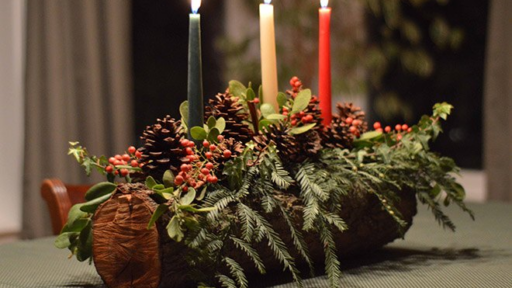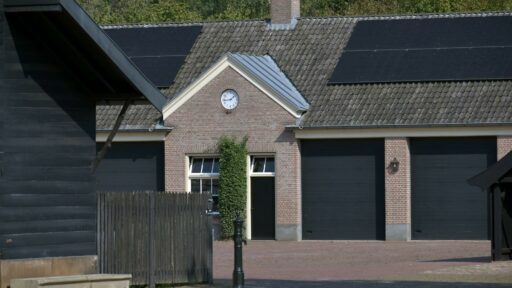Have you ever wondered why some fires seem to last forever while others burn out too quickly?
Choosing the right firewood can make all the difference in warmth, comfort, and even the mood of a gathering. Whether you are cozying up by the fireplace or hosting an outdoor fire pit night, knowing which wood burns best saves time and effort.
This article will guide you through the types of firewood and help you pick the perfect one for your needs so you can enjoy a better fire experience.
Types of Firewood and Their Burning Qualities
Firewood comes in many varieties, each with its own way of burning. Some woods burn hot and long, while others light quickly and give off more flames. The following sections explore popular firewood types and how they perform in a fire.
Oak
Oak is a dense, sturdy hardwood that burns slowly and steadily. It creates long-lasting coals that provide warmth for extended periods. This slow burn makes it ideal for fires that need to last through cold nights or long gatherings.
Oak produces minimal smoke compared to softer woods, keeping indoor fires clean and comfortable. Its slow-burning nature allows heat to radiate evenly over time. Many people prefer oak for indoor fireplaces, stoves, and long-lasting outdoor fires.
When split and properly seasoned, oak becomes easier to ignite while maintaining consistent heat. Its predictable burn pattern makes it reliable for cooking and heating alike. For those looking for high-quality, ready-to-use logs, you can visit Buyfirewooddirect.co.uk to explore kiln-dried oak options that burn efficiently and cleanly.
Maple
Maple burns hot and steadily, providing strong, lasting heat for a variety of spaces. It produces flames that are easy to control and enjoyable to watch. The wood is also simple to split and store, making it convenient for everyday use.
Maple dries efficiently and burns evenly, reducing the amount of smoke released. Its balance of heat and flame makes fires more comfortable and manageable. Many homeowners prefer maple for regular indoor and outdoor use.
The bright, lively flames of maple make it visually appealing. It holds coals well, allowing the fire to last longer with minimal attention. Its versatility makes it suitable for fireplaces, stoves, and backyard fire pits.
Hickory
Hickory is one of the densest hardwoods, making it a top choice for intense heat. It produces long-lasting coals that maintain warmth for hours. This makes it excellent for heating large spaces or fires meant to last overnight.
Hickory gives off a natural sweet aroma when burned, adding fragrance to the surrounding area. Its coals are strong, which makes it ideal for cooking, smoking meat, or sustaining a steady heat source. It combines performance and sensory appeal.
Splitting hickory requires some effort due to its density, but the payoff is worth it. Once split and seasoned, it burns reliably and consistently. It is often selected when maximum heat and long-lasting fire are priorities.
Birch
Birch lights quickly, producing bright and lively flames that are visually appealing. Its heat output is moderate, offering comfort without overwhelming intensity. The flames add warmth and charm to indoor and outdoor fires alike.
Birch burns faster than heavier hardwoods like oak or hickory. This makes it useful for starting fires or supplementing slower-burning woods. It is commonly used alongside other firewoods to balance flame, heat, and burn time.
The wood splits easily and seasons fairly quickly, making it convenient to handle. Birch also generates low smoke, keeping fires pleasant and manageable. Its combination of beauty, ease, and performance makes it a popular choice for many users.
Ash
Ash is a versatile hardwood that burns well even when not fully seasoned. It provides steady, consistent heat and produces long-lasting coals. Its reliability makes it a practical choice for regular use in stoves and fireplaces.
Ash is simple to split and handle, which makes it convenient for frequent firewood use. It lights relatively quickly but maintains a long burn once the fire is established. Many people rely on ash for its dependability and ease of use.
It produces minimal smoke and ash, making it cleaner than many other woods. Its even heat output ensures fires remain comfortable over time. Ash is often combined with other hardwoods to maintain balanced, consistent fires.
Pine
Pine is a softwood that ignites easily and burns quickly, creating bright, lively flames. Its initial heat is strong, though it does not last as long as hardwoods. Pine is ideal for short fires or for quickly warming a space.
Pine can produce sparks and more smoke than denser woods. This makes it best suited for outdoor fires, kindling, or situations where quick heat is needed. It works well in combination with hardwoods for longer-lasting fires.
The wood is lightweight, easy to split, and dries quickly for use soon after cutting. Despite its fast burn, pine is valued for jump-starting fires or adding immediate warmth. Its visual appeal and ease of use make it a popular choice for temporary fires.
Choosing the Right Firewood for Your Fireplace
Selecting the right firewood can transform your fireplace experience. Different types of wood offer varying heat, burn times, and aromas, and understanding these differences helps you get the most from your fire. The following sections explore common firewood types and their unique characteristics.
Hardwoods vs Softwoods
Hardwoods are dense and burn slowly, producing long-lasting heat and stable coals. They are ideal for keeping a fire going for hours and are great for heating a room efficiently. Hardwoods also create less smoke than softwoods, making them cleaner for indoor use.
Softwoods are lighter and burn quickly, giving off flames fast but not lasting as long. They are easy to light, which makes them perfect for starting fires. Softwoods can produce more sparks and smoke, so they are better for outdoor fires or kindling.
Many people use a combination of hardwoods and softwoods to get both fast flames and long-lasting heat. Using softwood first can help ignite the hardwood more easily. This approach ensures the fire starts quickly and stays strong.
Seasoned vs Green Wood
Seasoned wood has been dried for at least six months and contains little moisture. It lights easily, burns hotter, and produces less smoke. Seasoned wood is safer for indoor fireplaces and reduces creosote buildup in chimneys.
Green wood is freshly cut and contains high moisture. It is harder to light and produces more smoke and steam. Burning green wood can leave more residue in your fireplace and chimney, which can be a fire hazard.
Properly seasoned wood saves time and effort when building a fire. It also provides consistent heat throughout the burn. Choosing seasoned wood ensures your fire burns efficiently and cleanly.
Size and Cut of Firewood
The size of the logs affects how easily they burn and how long they last. Smaller logs ignite quickly and are easier to manage for a short fire. Larger logs burn more slowly and provide long-lasting heat, reducing the need to constantly add wood.
Cutting firewood to fit your fireplace is important for safety and efficiency. Logs that are too large can get stuck or burn unevenly. Properly sized logs ensure good airflow and a steady fire.
Stacking and storing firewood properly also keeps it dry and ready to use. Dry wood burns better and produces less smoke. Paying attention to the size and storage of wood improves the overall fire experience.
Aroma and Smoke
Different woods give off different smells when burned. Woods like hickory and apple produce a pleasant, sweet aroma. Choosing aromatic wood can enhance the comfort and enjoyment of a fire indoors.
Some woods produce more smoke than others. Softwoods like pine can spark and smoke more, while hardwoods generally burn cleaner. Being aware of smoke output helps you choose wood that is suitable for indoor use.
Considering both aroma and smoke can make your fireplace more enjoyable. Pleasant-smelling wood can improve the ambiance of a room. Less smoky wood also helps maintain air quality and reduces chimney buildup.
How To Store and Season Firewood Properly
Storing and seasoning firewood correctly can make a huge difference in how well it burns. Knowing how to keep your wood dry and how long to let it age ensures a hotter, cleaner fire. The following tips will guide you through the best practices for firewood care.
Choosing the Right Location
Pick a spot that is dry and gets plenty of sunlight. Avoid areas that are prone to flooding or dampness. Elevating the wood off the ground helps prevent moisture from seeping in.
Keep the area well-ventilated to allow air to circulate freely. Proper airflow helps the wood dry evenly and reduces mold growth. Do not stack wood directly against a wall or fence, as this can trap moisture.
The ground should be level to keep the stack stable. Use pallets, bricks, or a rack to lift the wood. This setup keeps firewood clean and ready to use.
Stacking Firewood
Stack wood in rows with the cut ends facing outward. This orientation allows air to move through the stack efficiently. Keep the stack tight enough to prevent falling, but loose enough for airflow.
Alternate the direction of each layer for stability. A well-built stack will stand for months without collapsing. Avoid stacking too high, as tall piles can be dangerous.
Cover the top of the stack but leave the sides open. This prevents rain or snow from soaking the wood. The cover also allows moisture to escape while keeping the wood dry.
Seasoning Firewood
Split wood before seasoning to expose the inside to air. Smaller pieces dry faster and more evenly. Freshly cut wood contains a lot of moisture, which makes it hard to burn.
Stack the wood in a sunny, breezy spot for best results. Seasoning usually takes six months to a year depending on the type of wood. Check the wood periodically for moisture and mold.
Properly seasoned wood is lighter and makes a hollow sound when tapped. It burns hotter and produces less smoke than unseasoned wood. Using seasoned wood improves efficiency and keeps chimneys cleaner.
Safety Tips for Burning Different Woods
When it comes to burning firewood, knowing how to handle each type safely can make a big difference in your fire’s performance and your home’s safety. These tips cover the key precautions you should take with different kinds of wood.
Using the Right Tools
Using proper tools is essential for safe firewood preparation and handling. Always use a sharp axe or splitting maul for cutting logs to avoid slips and injuries. Keep a sturdy chopping block to provide a stable surface when splitting wood.
Wear safety gear such as gloves, goggles, and closed-toe shoes to protect yourself from flying wood chips. Inspect tools before use to ensure handles are intact and blades are secure. Never leave tools unattended near children or pets.
Keep your firewood area organized so that tools and logs do not create tripping hazards. Arrange wood in a way that allows easy access without bending or reaching awkwardly. Clean up any debris promptly to maintain a safe workspace.
Managi3ng Fire Hazards
Firewood can create hazards if not managed properly while burning. Always check your fireplace or wood stove for cracks or damage before lighting a fire. Keep a fire extinguisher or water source nearby in case of emergencies.
Avoid overloading your fireplace or stove with wood, as this can cause flames to flare and create smoke hazards. Use a screen or door to contain sparks and embers. Ensure chimneys and vents are clean to reduce the risk of chimney fires.
Never burn treated, painted, or wet wood, as it produces harmful fumes and excessive smoke. Keep combustible materials like curtains, rugs, and furniture away from the fire area. Supervise fires at all times and fully extinguish them before leaving or going to bed.
Light the Fire Feel the Warmth Embrace the Night
A good fire can transform any evening into a cozy, inviting moment. The right wood fuels not just the flames, but also the memories made around it. Understanding your firewood options makes every fire more enjoyable and stress-free.
Taking the time to choose wisely ensures your fire meets your needs. With the right wood, every fire becomes an effortless source of warmth and comfort.
Did you find the information in this article helpful? If so, be sure to check out our blog for more valuable resources.








